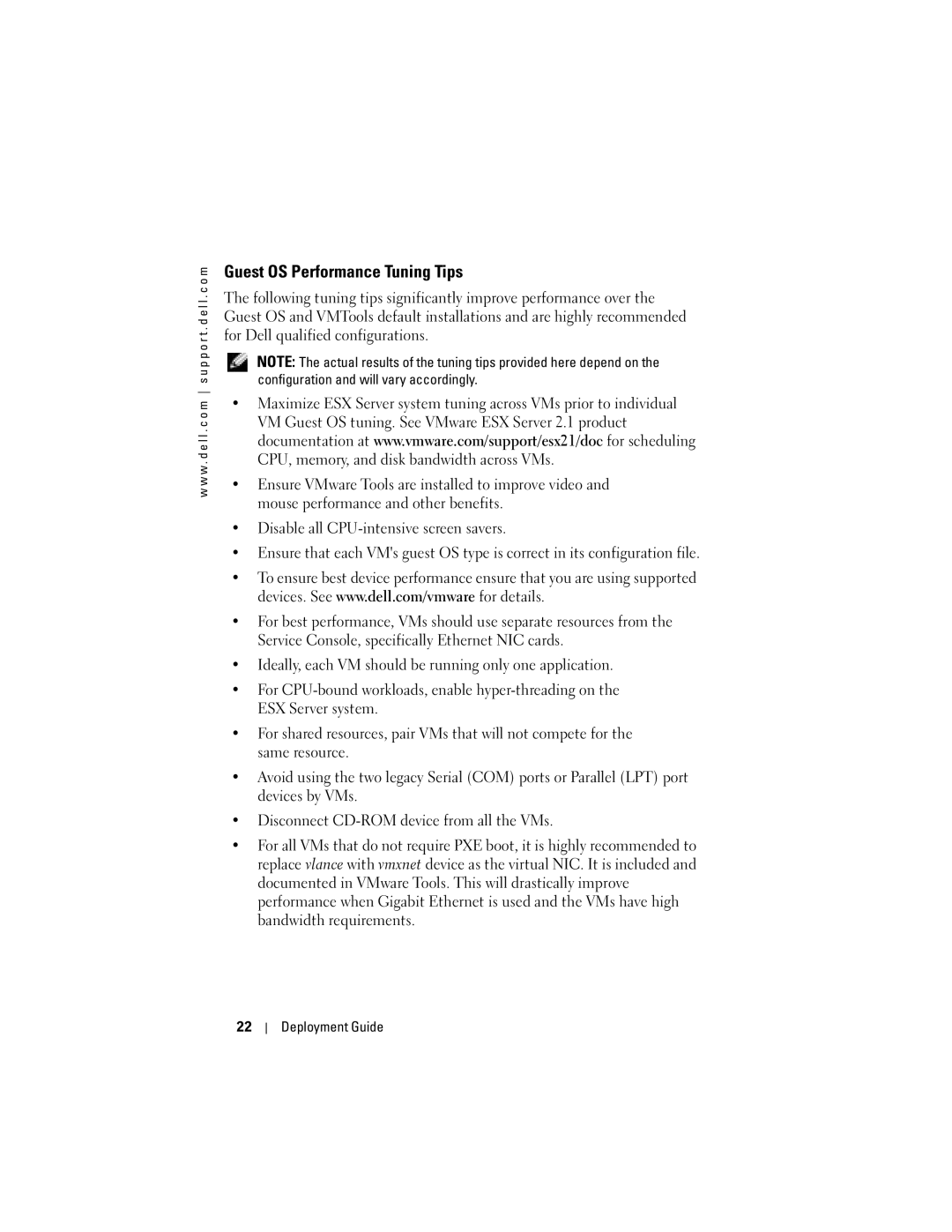w w w . d e l l . c o m s u p p o r t . d e l l . c o m
Guest OS Performance Tuning Tips
The following tuning tips significantly improve performance over the Guest OS and VMTools default installations and are highly recommended for Dell qualified configurations.
NOTE: The actual results of the tuning tips provided here depend on the configuration and will vary accordingly.
•Maximize ESX Server system tuning across VMs prior to individual VM Guest OS tuning. See VMware ESX Server 2.1 product documentation at www.vmware.com/support/esx21/doc for scheduling CPU, memory, and disk bandwidth across VMs.
•Ensure VMware Tools are installed to improve video and mouse performance and other benefits.
•Disable all
•Ensure that each VM's guest OS type is correct in its configuration file.
•To ensure best device performance ensure that you are using supported devices. See www.dell.com/vmware for details.
•For best performance, VMs should use separate resources from the Service Console, specifically Ethernet NIC cards.
•Ideally, each VM should be running only one application.
•For
•For shared resources, pair VMs that will not compete for the same resource.
•Avoid using the two legacy Serial (COM) ports or Parallel (LPT) port devices by VMs.
•Disconnect
•For all VMs that do not require PXE boot, it is highly recommended to replace vlance with vmxnet device as the virtual NIC. It is included and documented in VMware Tools. This will drastically improve performance when Gigabit Ethernet is used and the VMs have high bandwidth requirements.
22
